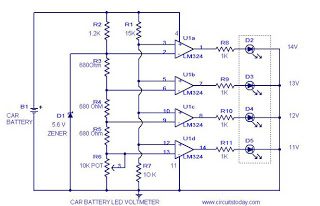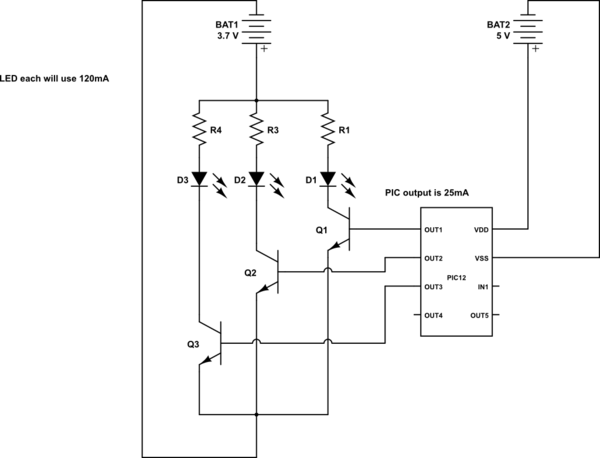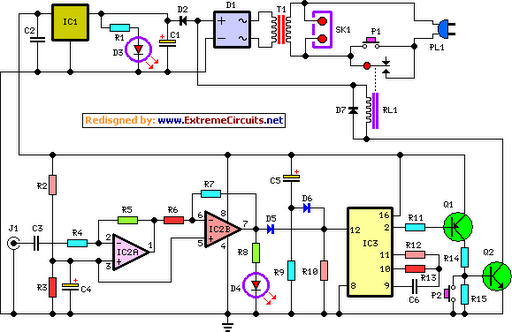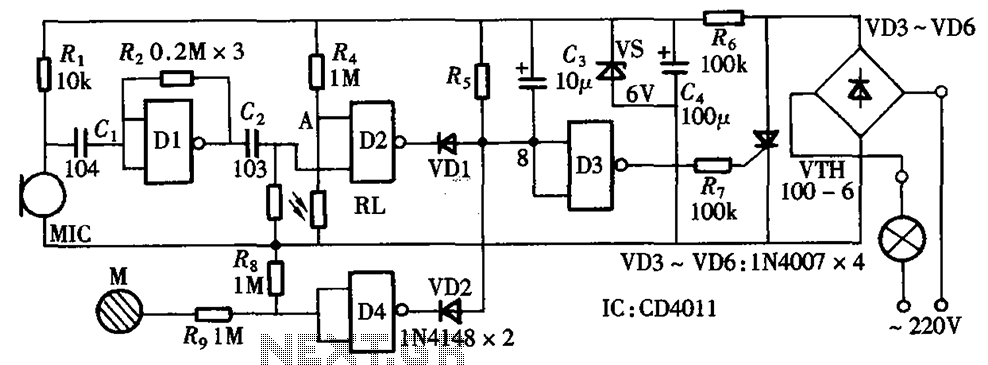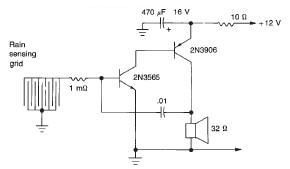
Simple Audio Mixer circuit

Incorporate resistors in a parallel configuration to enhance audio input. To control the volume for each input channel, integrate a linear trimmer or potentiometer with the following configuration: pin 1 connects to ground, pin 2 serves as the output, and pin 3 acts as the input.
To achieve improved audio input through the use of resistors in parallel, it is essential to understand the implications of this configuration. When resistors are connected in parallel, the total resistance decreases, which allows for a greater current to flow through the circuit. This characteristic is beneficial for audio applications, as it can increase the overall signal strength and improve the mixing of multiple audio sources.
For volume control, the linear trimmer or potentiometer serves as an adjustable resistor, allowing for fine-tuning of the audio levels. The specified pin configuration is critical for proper functionality. Pin 1, connected to ground, establishes a reference point for the circuit. Pin 2, designated as the output, delivers the adjusted audio signal to subsequent stages in the system. Pin 3, acting as the input, receives the audio signal that is to be modified.
When designing the circuit, it is advisable to select resistors with appropriate values to ensure that the desired audio characteristics are achieved without introducing excessive noise or distortion. The choice of the potentiometer value should also be considered, as it will affect the range of volume control available. Typically, a potentiometer value of 10kΩ to 100kΩ is suitable for audio applications, but the specific requirements may vary based on the overall circuit design.
In summary, the integration of parallel resistors and a linear trimmer or potentiometer into an audio input circuit can significantly enhance functionality. Proper attention to component selection and configuration will ensure optimal performance and user experience in audio applications.Add some resistors in parallel connection for more audio input. To adjust the volume for each input channel, add linear trimmer or potentiometer with configuration: pin1> ground; pin2>output; pin 3>input 🔗 External reference
To achieve improved audio input through the use of resistors in parallel, it is essential to understand the implications of this configuration. When resistors are connected in parallel, the total resistance decreases, which allows for a greater current to flow through the circuit. This characteristic is beneficial for audio applications, as it can increase the overall signal strength and improve the mixing of multiple audio sources.
For volume control, the linear trimmer or potentiometer serves as an adjustable resistor, allowing for fine-tuning of the audio levels. The specified pin configuration is critical for proper functionality. Pin 1, connected to ground, establishes a reference point for the circuit. Pin 2, designated as the output, delivers the adjusted audio signal to subsequent stages in the system. Pin 3, acting as the input, receives the audio signal that is to be modified.
When designing the circuit, it is advisable to select resistors with appropriate values to ensure that the desired audio characteristics are achieved without introducing excessive noise or distortion. The choice of the potentiometer value should also be considered, as it will affect the range of volume control available. Typically, a potentiometer value of 10kΩ to 100kΩ is suitable for audio applications, but the specific requirements may vary based on the overall circuit design.
In summary, the integration of parallel resistors and a linear trimmer or potentiometer into an audio input circuit can significantly enhance functionality. Proper attention to component selection and configuration will ensure optimal performance and user experience in audio applications.Add some resistors in parallel connection for more audio input. To adjust the volume for each input channel, add linear trimmer or potentiometer with configuration: pin1> ground; pin2>output; pin 3>input 🔗 External reference
